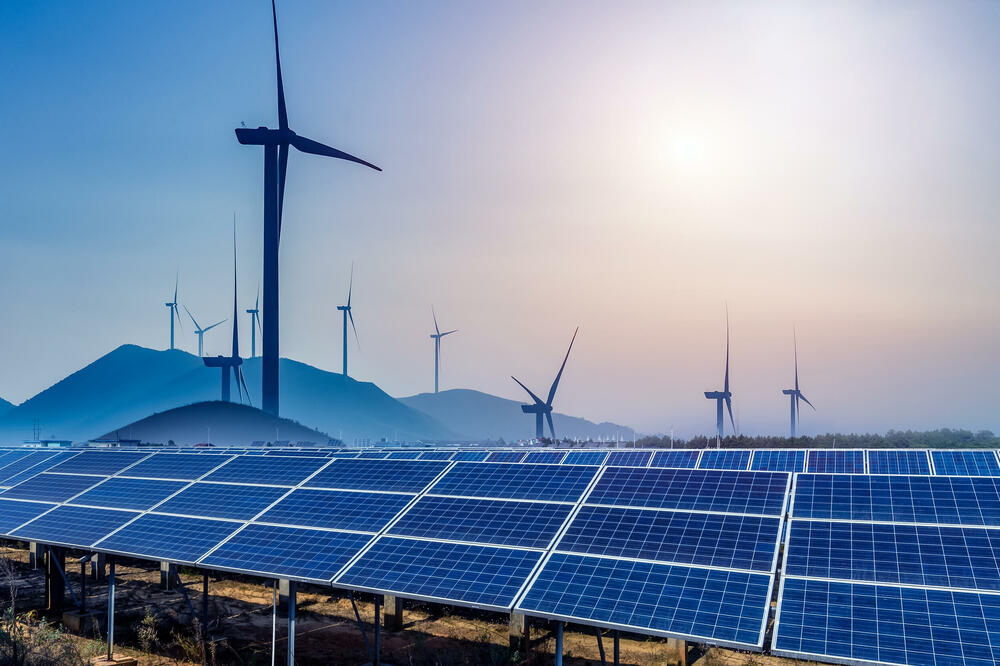The CWP Europe company is developing the Montechevo project on the territory of the municipality of Cetinje, in the cadastral municipalities of Lastva, Čevo and Prentin Do. The total area on which the construction of the solar power plant is planned is approximately 600 hectares. The planned installed capacity of the Montechevo solar power plant is 400 MW.
"The citizens of Montenegro themselves will benefit from such projects, because the use of electricity from domestic renewable energy sources (RES) contributes to a lower price of electricity. For example, at the first auctions in Serbia this year, our company offered a price of 64 eur/MWh from the wind farm and concluded contracts with the Electric Power Company of Serbia on the purchase of electricity at a price that is almost twice as low as the market price," he explains. Maja Turković, executive director of CWP Europe, one of the aspects of Montechevo that interests the citizens of Montenegro the most.
Turković states that the calculated expected annual production of the entire solar power plant is about 650 GWh, which is enough to supply more than 154.000 households with green electricity.
In addition, says Turković, by implementing the Montechevo project, Montenegro increases the use of renewable energy sources that directly contribute to the construction of a sustainable and diversified energy sector and greater energy independence.
Reduction of CO2 emissions
The production of electricity in the Montechevo solar power plant will also lead to a reduction of CO2 emissions in Montenegro in the amount of about 306.150 tons per year, which opens up the possibility of trading in carbon dioxide emissions, guarantees of origin and more stable development of the electricity market in the country.
It is important to note that for the purpose of connecting the Montechevo solar power plant, one of the largest distribution facilities in the Balkans will be built, namely the 400 kV Čevo distribution plant, which will directly contribute to greater stability and performance of the power system of Montenegro.
The development and construction of the project will take place in phases. The start of construction of the project is planned for the beginning of 2025. Upon completion of construction and commissioning, which is expected at the end of 2026, Montechevo will be one of the largest solar power plants in Montenegro.
Today, CWP participates in the realization of over twenty wind and solar projects in the region, with a total power of about 6 GW. From Serbia, through Bulgaria, Romania, Albania, North Macedonia, Ukraine to Moldova. What was the main motive for CWP to start implementing the solar power plant project in Montenegro?
CWP's mission is to participate in the energy transition in the countries in the region that are the most polluted and today the most dependent on the use of fossil fuels, primarily dirty coal and lignite.

The advantage of Montenegro is that, in addition to rich natural resources, it has a developed transmission energy infrastructure that can support the development of RES projects. According to the announcements of the Government of Montenegro, a revision of the legislation is expected in order to establish a framework for the competitive procurement of energy from RES through the auction system. Due to its position and connection with neighboring countries, the great advantage of Montenegro is the interconnection with Italy and the possibility to export energy from the Balkans to EU countries. In addition to all of the above, if you look at the location of the Montechevo project, it was clear that we should include Montenegro in our development plan and make it an investment destination.
Great interest in RES
Montenegro obviously has the natural conditions for investing in renewable energy sources. However, how adapted is the system that, apart from nature, would attract investment in this area?
There is always room for improvement in the energy sector of almost every country. What is important for Montenegro is that the competent institutions are already announcing the adoption of a new legal mechanism that would more competitively encourage the production of electricity from renewable sources and define obligations in terms of balancing. Recently, the European Bank for Reconstruction and Development together with the Ministry of Capital Investments of Montenegro announced the implementation of a program for the introduction of auctions, all with the aim of helping Montenegro build a sustainable and diversified energy sector by creating a favorable business environment for private investments.
As investors, we need a transparent and stimulating legal framework that enables greater predictability and regulatory sustainability of the project. We believe that the Government of Montenegro will recognize the efforts of all investors so that, in addition to tourism, energy is a development opportunity for Montenegro, where the implementation of concrete measures, such as auctions for the allocation of market premiums for renewable energy sources, would send a strong signal to both investors and financial institutions. .
Investing in renewable energy sources seems to be a very attractive investment in recent times. Can and how can the state protect itself from irresponsible investors, which, as in every field, there are in this area as well?
The great interest in investing in renewable energy sources often exists because the vast majority of investors expect a quick return on investment with a high rate of return, although the reality is far different, as most quickly realize. The development of infrastructural energy projects is a multidisciplinary procedure that is very capital intensive, while the risks are numerous. We believe that the state should not discriminate against anyone or prevent the right to invest, because that would be contrary to the principle of free competition, which is always good. What the state needs to do is to create such a regulatory framework that makes it possible to avoid congestion in the processing of investor applications, given that the number of requests for planned capacities exceeds the system's real capabilities. Bank guarantees, as a means of security, are one of the examples of how some of the neighboring countries have solved the issue of inadequate requirements regarding the connection of planned production capacities from RES.
Storage and Oscillations
It is common knowledge that the installation of large solar panels requires significant areas of land. This can cause conflicts with the owners who use the land for agriculture. How did CWP solve this problem?
The Montechevo project is located on the territory of the municipality of Cetinje, that is, in the cadastral municipalities of Lastva, Čevo and Prentin do. If you look at the location of the Montechevo project, it is almost exceptional because there is no negative impact on the population and agriculture, considering that this location is neither populated nor agriculturally active. The land on which the construction of the solar power plant is planned is, according to the way of use, mostly barren land, and pastures and meadows of the 7th and 8th class.
Solar panels produce electricity only when the sun is present. An efficient energy storage infrastructure is needed to solve the problem of oscillation in production, as well as an efficient power grid for energy transmission. How does CWP Europe face these challenges?
Regarding energy storage and solving the problem of oscillations in production during the operation of the solar power plant, we are considering options for installing batteries that are much more compatible with solar power plants than with other renewable energy sources. However, in order to install batteries, it is necessary to develop the market for system services, in order to justify their construction as an investment. The battery market and the technologies themselves are constantly progressing, and our decision to invest in projects in Montenegro is also based on the fact that we have seen that Montenegro follows trends in the world and is ready to adjust the legal framework as soon as possible to support investment initiatives in batteries.
Bonus video:





